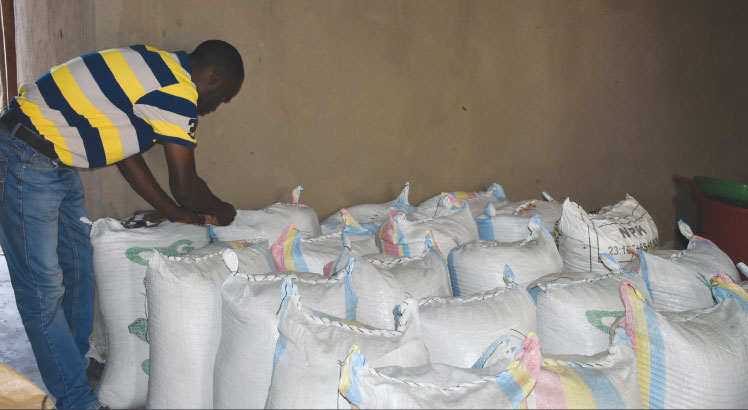Maize prices up amid dwindling income
Maize prices have continued to escalate amid dwindling incomes, making lives difficult for most low wage earners.
Published data from the United States funded Famine and Early Warning Systems Network (FewsNet) show that maize prices in Malawi have continued to trend higher than both the previous year and the five-year average, rising by an average of between five and 50 percent in a month.

The data show that maize prices have averaged between K520 per kilogramme (kg) and K700 per kg, raising fears of food insecurity.
These prices are 55 percent to 250 percent higher than the previous year’s prices and 150 to 360 percent above the five-year average, according to FewsNet.
Reads the July 2023 Malawi Key Message Update: “Overall, high maize prices have the most significant impact on poor households in southern Malawi, as they lost most of their own crops, which were ready for harvest, during Tropical Cyclone Freddy and have few sources of income with which to purchase food.
“Most of southern Malawi is expected to face a crisis and stressed outcomes through at least January, driven by below-normal agricultural production, rising food prices, and loss of assets caused by Tropical Cyclone Freddy.”
In an interview on Tuesday, Andy Chanza, a shopkeeper at one of the cement outlets in Blantyre, said he is failing to fend for his four-member household.
He said: “I earn an average of K70 000, sometimes I get more when I help customers upload the cement in their vehicles.
“With K70 000, managing the home has become unbearable as already K20 000 goes towards rentals, leaving me with K50 000 to cater for food and other basic necessities.”
With the cost of living rising by 46 percent as of May 2023 compared to the same period last year, the majority of the poor are grappling to make ends meet.
Centre for Social Concern data shows that the cost of living as of May 2023 was at an average of K377 892 for a family of six, up from K257 028 during a similar period last year.
Reserve Bank of Malawi (RBM) data show that in the second quarter (April to June 2023), headline inflation surged to an average of 28.4 percent, from 26.5 percent in the last quarter as compared to 19.4 percent in the same quarter the previous year.
The outturn was driven by an acceleration in food inflation, which rose to an average of 38 percent during the review period, from 31.7 percent in the previous quarter and compared to 25.4 percent in the same quarter the previous year.
Meanwhile, maize production has dropped by 5.6 percent in the 2022/23 season to 3.5 million metric tonnes (MT) from 3.71 million MT in the 2021/22 season.
Ministry of Agriculture Principal Secretary Dickxie Kampani is on record as having attributed the decline to unfavourable weather conditions, particularly in the Southern and Northern regions and reduced uptake of farm inputs.
“The ministry will continue to monitor the price trends and inform any policy response actions to ensure the nation is food secure,” he said.
On his part, Consumers Association of Malawi executive director John Kapito said there is need for the government to implement cushioning mechanisms.
He said: “The maize scarcity will obviously trigger an increase in the prices and we wonder what cushioning mechanisms government has put in place considering that Admarc will not buy maize.”
As part of the food component, maize constitutes 53.7 percent of the consumer price index, an aggregate basket of goods and services for computing inflation.





